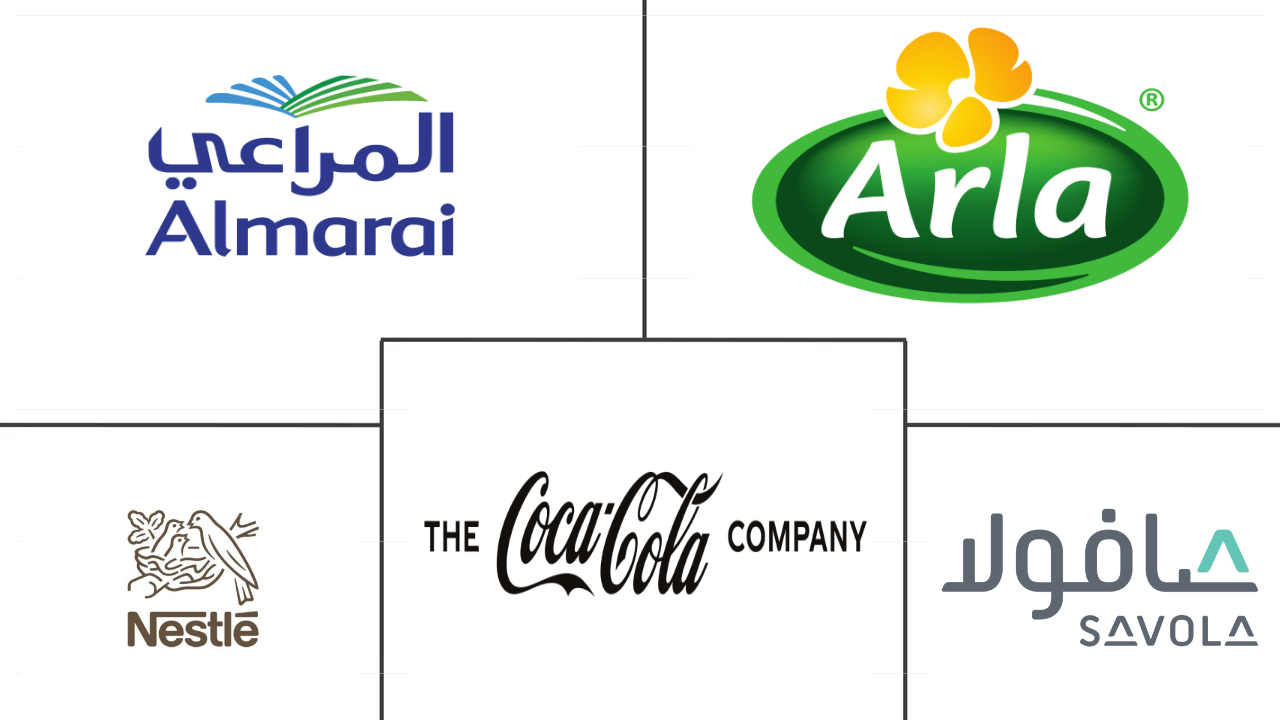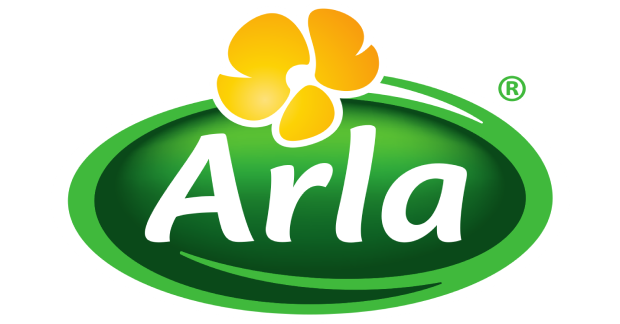Market Size of middle east ready to drink coffee Industry
|
|
Study Period | 2018 - 2030 |
|
|
Market Size (2024) | USD 159.8 Million |
|
|
Market Size (2030) | USD 290.5 Million |
|
|
Largest Share by Soft Drink Type | Iced coffee |
|
|
CAGR (2024 - 2030) | 10.48 % |
|
|
Largest Share by Country | Saudi Arabia |
Major Players |
||

|
||
|
*Disclaimer: Major Players sorted in no particular order |
Middle East Ready to Drink Coffee Market Analysis
The Middle East Ready to Drink Coffee Market size is estimated at 159.8 million USD in 2024, and is expected to reach 290.5 million USD by 2030, growing at a CAGR of 10.48% during the forecast period (2024-2030).
159.8 Million
Market Size in 2024 (USD)
290.5 Million
Market Size in 2030 (USD)
7.78 %
CAGR (2018-2023)
10.48 %
CAGR (2024-2030)
Largest Segment by Soft Drink Type
26.31 %
value share, Iced coffee, 2023
The higher temperatures leading the demand for cold beverages making RTD iced coffee with versatility like iced lattes, flavored iced coffee, making a popular choice.
Fastest-growing segment by Soft Drink Type
10.94 %
Projected CAGR, Iced coffee, 2024-2030
RTD cold brew with smooth taste and higher caffeine content, also included premium and high-end cold brew options, growing the demand for more refined coffee experience.
Leading Market Player
41.34 %
market share, Arla Foods amba, 2022

Arla Foods manufactures, distributes and market the Starbucks RTD coffee. It is investing in marketing and expanding their presence to meet rise in demand for RTD coffee.
Largest Segment by Country
48.35 %
value share, Saudi Arabia, 2023
Expanding urbanization, higher living standards, large expat population and country’s tourism had led to the growth of premium RTD coffee beverages as a convenient drink.
Fastest-growing segment by Country
10.72 %
Projected CAGR, Qatar, 2024-2030
Increasing working population and working hours resulting in demand for convenient bevarages and rise in number of branded shops that offer RTD coffee at their stores.
The warmer climate in the region is driving the demand for ready-to-drink (RTD) cold beverages, including RTD coffee
- The popularity of RTD coffee, encompassing products like iced coffee and cold brew, has surged in the Middle East. In 2022, the United Arab Emirates, the region's leading market, consumed USD 60,000 worth of coffee domestically. The convenience and portability of RTD beverages, such as RTD coffee, have made them a hit, particularly among the bustling urban populace. These ready-to-drink options spare consumers the need to grind beans, brew, or clean up, offering a hassle-free coffee experience.
- Gen Z consumers show a stronger inclination toward RTD coffee over hot coffee. In response, brands are expanding and diversifying their offerings in the RTD coffee category. Coffee consumption holds cultural significance in the Middle East, and the rising popularity of RTD coffee is largely driven by the diverse preferences of consumers, especially the youth. Consequently, the segment witnessed an impressive value growth rate of 28.51% from 2021 to 2023.
- Iced coffee has gained global traction, including in the Middle East, emerging as the favored RTD coffee variant in the region. In 2023, it commanded a significant value share of 27.28%. In the Middle East's hot climate, iced coffee offers a refreshing alternative to its hot counterpart. The market for RTD iced coffee is further fueled by its availability in a range of flavors and formulations, often with added sweetness, enhancing its appeal.
- Cold brew coffee is projected to witness the highest growth, with a CAGR of 14.76% by volume from 2024 to 2030. Cold brew's milder and less acidic flavor, compared to traditional coffee, coupled with its refreshing nature, makes it particularly enticing in warmer climates.
Rising demand for special flavors and increasing working population propelling RTD coffee sales in the region
- From 2021 to 2023, the Middle East saw a notable 28.5% surge in the value of RTD coffee sales. This uptick was primarily driven by shifting coffee consumption trends, particularly in urban areas. Notably, there was a rising preference for specialty coffees, coinciding with the expansion of popular brew outlets like Barista and Starbucks. In 2023, the United Arab Emirates emerged as the dominant market among Middle Eastern countries, experiencing a 10.83% sales value growth from 2021. This growth can be attributed to the country's sizable urban and working populations, which stood at 8.3 million and 6.6 million, respectively, in 2022, seeking convenient options amidst their busy schedules.
- Saudi Arabia, too, is poised for growth, expected to register a CAGR of 8.75% from 2024 to 2030. The government's initiatives and investments aim to bolster coffee consumption by ramping production and creating market entry opportunities. For instance, over the next decade, the state-backed Saudi Coffee Company plans to inject nearly USD 320 million into the domestic coffee-growing industry, targeting a production surge from 300 to 2,500 tonnes annually.
- The Rest of Middle East, which includes countries like Bahrain, Iran, Iraq, Turkey, Jordan, and Yemen, is witnessing a rising demand for personalized RTD coffee products, particularly those with lower sugar content, catering to diabetic consumers. This regional segment is projected to experience the highest CAGR of 15.39% in RTD coffee sales from 2024 to 2030, driven by a growing working population and evolving consumer preferences.
Middle East Ready to Drink Coffee Industry Segmentation
Cold Brew Coffee, Iced coffee are covered as segments by Soft Drink Type. Aseptic packages, Glass Bottles, Metal Can, PET Bottles are covered as segments by Packaging Type. Off-trade, On-trade are covered as segments by Distribution Channel. Qatar, Saudi Arabia, United Arab Emirates are covered as segments by Country.
- The popularity of RTD coffee, encompassing products like iced coffee and cold brew, has surged in the Middle East. In 2022, the United Arab Emirates, the region's leading market, consumed USD 60,000 worth of coffee domestically. The convenience and portability of RTD beverages, such as RTD coffee, have made them a hit, particularly among the bustling urban populace. These ready-to-drink options spare consumers the need to grind beans, brew, or clean up, offering a hassle-free coffee experience.
- Gen Z consumers show a stronger inclination toward RTD coffee over hot coffee. In response, brands are expanding and diversifying their offerings in the RTD coffee category. Coffee consumption holds cultural significance in the Middle East, and the rising popularity of RTD coffee is largely driven by the diverse preferences of consumers, especially the youth. Consequently, the segment witnessed an impressive value growth rate of 28.51% from 2021 to 2023.
- Iced coffee has gained global traction, including in the Middle East, emerging as the favored RTD coffee variant in the region. In 2023, it commanded a significant value share of 27.28%. In the Middle East's hot climate, iced coffee offers a refreshing alternative to its hot counterpart. The market for RTD iced coffee is further fueled by its availability in a range of flavors and formulations, often with added sweetness, enhancing its appeal.
- Cold brew coffee is projected to witness the highest growth, with a CAGR of 14.76% by volume from 2024 to 2030. Cold brew's milder and less acidic flavor, compared to traditional coffee, coupled with its refreshing nature, makes it particularly enticing in warmer climates.
| Soft Drink Type | |
| Cold Brew Coffee | |
| Iced coffee | |
| Other RTD Coffee |
| Packaging Type | |
| Aseptic packages | |
| Glass Bottles | |
| Metal Can | |
| PET Bottles |
| Distribution Channel | |||||||
| |||||||
| On-trade |
| Country | |
| Qatar | |
| Saudi Arabia | |
| United Arab Emirates | |
| Rest of Middle East |
Middle East Ready to Drink Coffee Market Size Summary
The Middle East Ready to Drink (RTD) Coffee Market is experiencing significant growth, driven by the increasing popularity of convenient coffee options like iced coffee and cold brew. These products have become particularly appealing to the urban population, offering a hassle-free alternative to traditional coffee preparation methods. The market is characterized by a strong preference among younger consumers, especially Gen Z, who favor RTD coffee over hot coffee. This trend has prompted brands to expand and diversify their offerings, catering to the diverse tastes and preferences of the region's youth. The cultural significance of coffee in the Middle East further fuels this demand, with iced coffee emerging as a favored variant due to its refreshing nature in the region's hot climate. Cold brew coffee is also gaining traction, known for its milder flavor and lower acidity, making it an attractive option in warmer areas.
The market landscape is fairly consolidated, with major players like Almarai Company, Arla Foods amba, Nestle S.A., The Coca-Cola Company, and The Savola Group dominating the scene. These companies are actively introducing new products with traditional flavors and functional benefits to cater to the evolving consumer preferences across the Middle East. The region's demand for personalized RTD coffee products, particularly those with lower sugar content, is on the rise, driven by a growing working population and health-conscious consumers. Saudi Arabia and the UAE are key markets, with initiatives and investments aimed at boosting coffee consumption and production. The market's growth is further supported by the introduction of innovative products and strategic expansions by leading brands, ensuring a dynamic and competitive landscape in the coming years.
Middle East Ready to Drink Coffee Market Size - Table of Contents
-
1. MARKET SEGMENTATION (includes market size in Value in USD and Volume, Forecasts up to 2030 and analysis of growth prospects)
-
1.1 Soft Drink Type
-
1.1.1 Cold Brew Coffee
-
1.1.2 Iced coffee
-
1.1.3 Other RTD Coffee
-
-
1.2 Packaging Type
-
1.2.1 Aseptic packages
-
1.2.2 Glass Bottles
-
1.2.3 Metal Can
-
1.2.4 PET Bottles
-
-
1.3 Distribution Channel
-
1.3.1 Off-trade
-
1.3.1.1 Convenience Stores
-
1.3.1.2 Online Retail
-
1.3.1.3 Specialty Stores
-
1.3.1.4 Supermarket/Hypermarket
-
1.3.1.5 Others
-
-
1.3.2 On-trade
-
-
1.4 Country
-
1.4.1 Qatar
-
1.4.2 Saudi Arabia
-
1.4.3 United Arab Emirates
-
1.4.4 Rest of Middle East
-
-
Middle East Ready to Drink Coffee Market Size FAQs
How big is the Middle East Ready to Drink Coffee Market?
The Middle East Ready to Drink Coffee Market size is expected to reach USD 159.75 million in 2024 and grow at a CAGR of 10.48% to reach USD 290.49 million by 2030.
What is the current Middle East Ready to Drink Coffee Market size?
In 2024, the Middle East Ready to Drink Coffee Market size is expected to reach USD 159.75 million.

